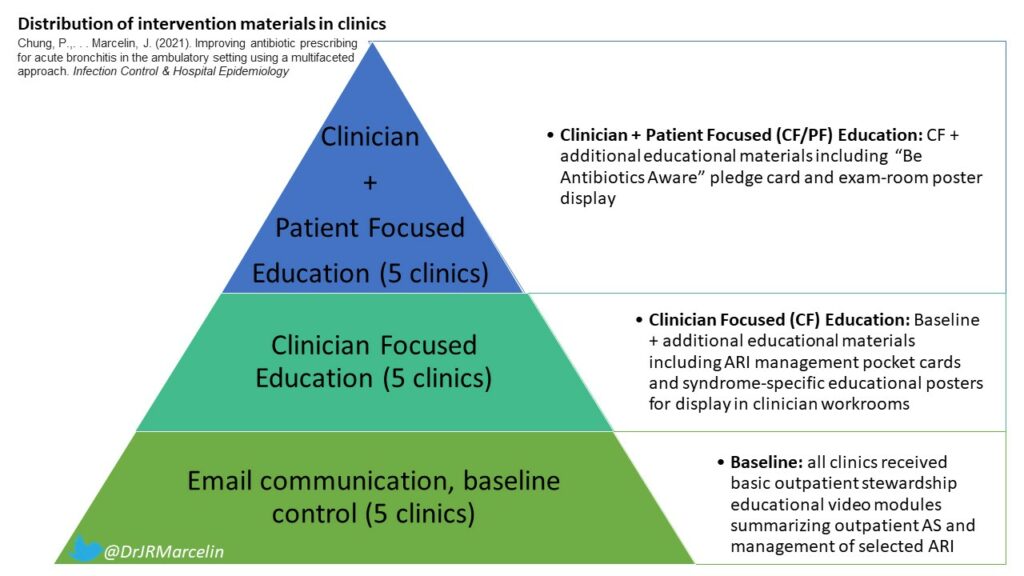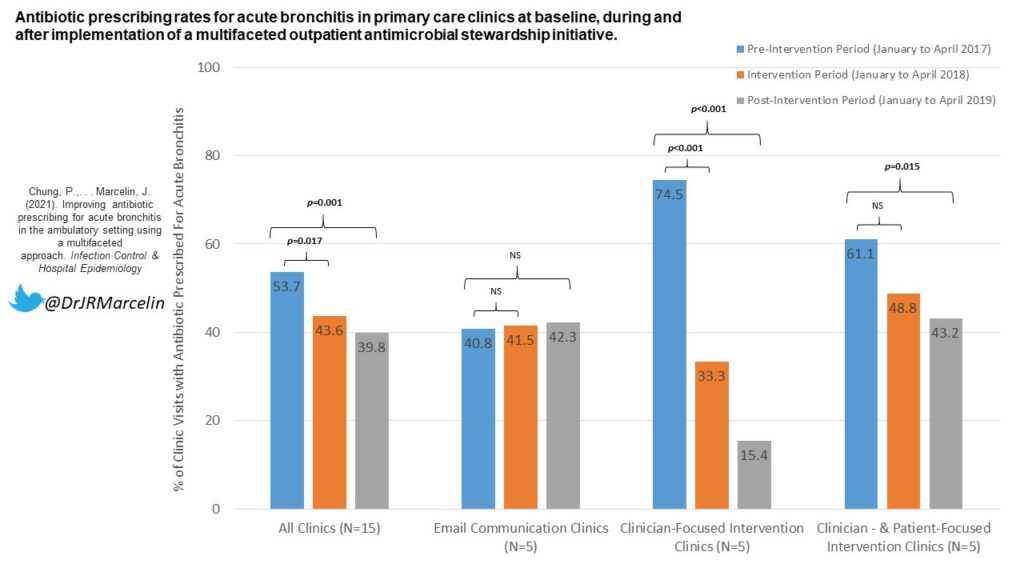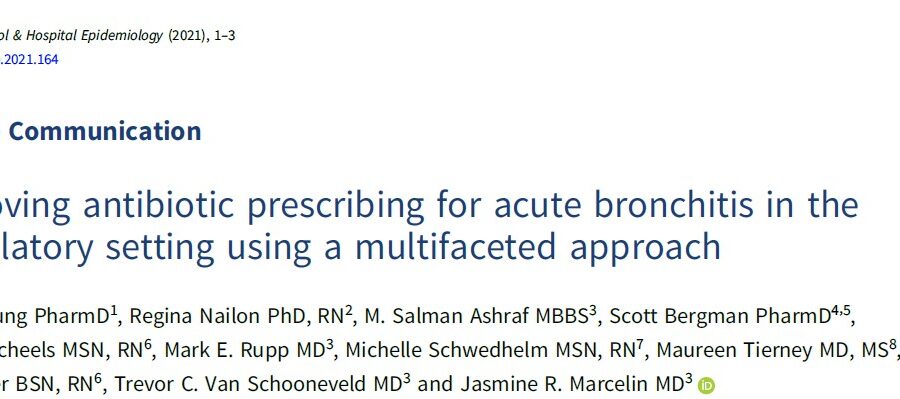Inappropriate outpatient antibiotic use remains a problem needing to be addressed as part of the strategy to reduce antimicrobial resistance. Nebraska (NE) ranks among the highest states for per capita antibiotic (AB) use in outpatient (OP) settings. Nebraska Medicine (NM) partnered with NE Antimicrobial Stewardship Assessment and Promotion Program (ASAP), a program funded by NE DHHS via a CDC grant, to reduce AB prescribing for acute bronchitis in OP settings.
Jasmine Marcelin, MD and Phil Chung, PharmD led a multifaceted approach to reducing antibiotic use in ambulatory clinics within our Nebraska Medicine hospital system. This approach included use of both clinician and patient-focused education with active and passive components.


The materials used in this quality initiative are available freely on the Nebraska Medicine Antimicrobial Stewardship Program/Nebraska Antimicrobial Stewardship Assessment and Promotion Program website, and this manuscript provides a blueprint for other institutions to implement using these materials. We presented this work as an Oral Abstract at IDWeek2019, Washington DC, and the full results were published in Infection Control and Hospital Epidemiology in May 2021.
Article citation: Chung, P., Nailon, R., Ashraf, M., Bergman, S., Micheels, T., Rupp, M., . . . Marcelin, J. (2021). Improving antibiotic prescribing for acute bronchitis in the ambulatory setting using a multifaceted approach. Infection Control & Hospital Epidemiology, 1-3. doi:10.1017/ice.2021.164
